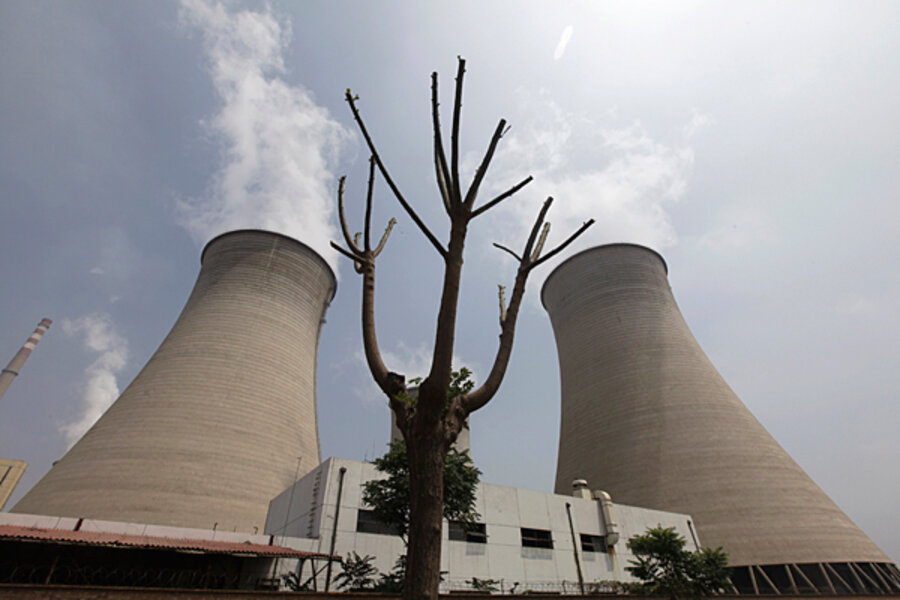China's energy crackdown: more PR than big efficiency step?
| Beijing
The Chinese government’s much-ballyhooed new pledge to close thousands of energy-guzzling factories seems more a public signal of its intent to boost energy efficiency than a concrete step.
That is because, of the 2,087 factories threatened with closure by Sept. 30, listed on the Industry Ministry’s website on Sunday night, many appear to have shut down already, some as long as two years ago.
Three out of 4 blacklisted companies contacted by The Christian Science Monitor said the facilities targeted for closure were no longer functional.
“We shut down those two furnaces in early 2009,” said a staffer at the Aosen Steel Company in Xinji, who identified himself only as Mr. Wang. “For many other steel companies, if their facilities are on the list, most of them are already either dismantled or out of use.”
At the Ningbo Zhenjiang Tongbao Paper Co., where three of its mills are on the ministry’s list, it was a similar story. “We shut those mills in March 2008,” said spokesman Pan Guangshu. “They were very old. We are installing new machinery that will burn sawdust instead of coal and is more energy efficient.”
The government’s warning that companies must shut outdated plants within six weeks or lose access to bank loans, new investment, and land for construction followed a threat last May by Premier Wen Jiabao that he would use an “iron hand” to increase energy efficiency.
It also came three days after the government revealed it had canceled preferential power tariffs for energy-intensive companies run by local governments.
Good progress – until last year
Until last year China appeared to be making good progress toward meeting its goal of reducing energy use per unit of production by 20 percent between 2005 and 2010. Four years of steady cuts achieved a 14.4 percent reduction by the end of 2009.
Beijing is keen to increase its energy efficiency not only to improve its environmental record (it is the largest emitter of CO2 and other greenhouse gases) but also to strengthen its energy security: China recently outstripped the United States as the world’s biggest energy consumer, according to the International Energy Agency.
But as Beijing’s massive economic stimulus plan boosted output of steel and cement, China’s energy efficiency fell back by 3.2 percent in the first three months of this year. “The reverse greatly increased the difficulty of our work for the last three quarters of this year,” Mr. Wen warned.
It is doubtful, however, that the blacklist issued Sunday will have as much impact as was at first hoped, since a significant proportion of the targeted facilities appear to be no longer operational.
“A lot of them have closed already,” says Lin Boqiang, head of the Center for Energy Economics Research at Xiamen University, because “local governments picked the companies that were about to shut anyway as the ones to report. That way they chose the easiest ones.”
The unprecedented public list, naming and shaming firms, is important nevertheless, argues Yang Fuqiang, a climate-change expert with the Worldwide Fund for Nature (WWF) in Beijing.
Often, he points out, local governments have evaded Beijing’s edicts to shut down a certain percentage of an industry’s capacity that were hard to enforce and “they protected all their factories because they brought in income.
“The question is not whether the government’s policy is good,” Dr. Yang adds, “it is implementation, how serious they are. Putting named firms on a blacklist makes it easier to cut them off from banks and investors” unless they meet government energy efficiency targets, he says. “This time they are serious.”
Professor Lin agrees. “If they weren’t serious they would not have made this list public,” he says. “The government wants to show people that it is doing something seriously. They want to show their determination to take out small capacity, low efficiency production.”
But given the flaws in the list, he adds, “to reach the 20 percent target, they will need to do more.”





